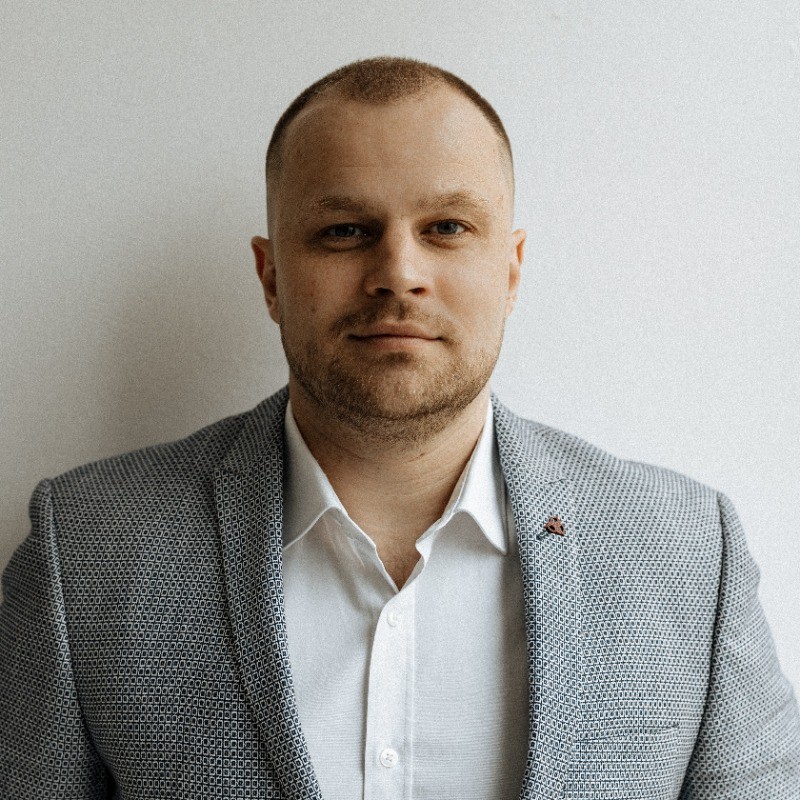Table of content
When collaborating with a dedicated development team, most companies make a surprising discovery – there are quite a number of specialists working on the project. And while the focal area of developers is nuff said, such job titles as PMs, QAs, and BAs make business owners scratch their heads.
3 Types of Software Development Teams. Which One to Choose?
When kicking off a new software development project, naturally we all aim for success. And the strong core that future proves high-quality results is your development team. While putting together a group of tech specialists, the most important question that arises is whether to set up a crew of generalists, specialists, or a hybrid team.
Let us break down the three types of development teams for you:
Generalist
Generalists dabble in many areas instead of having one limited area of responsibility. It typically includes up to 10 people who wear multiple hats. Due to its small size, these Jacks of all trades can handle only one project per time. That is why this is the best bet for small or mid-size projects that use a small tech stack.
As the name implies, generalists focus on improving the software as a whole without getting deep into the interior.
Specialist
Unlike generalists, this type of team includes experts that have got the knack of one specific field. A specialist team works wonders for complex projects that call for deep technical expertise.
The advantage is obvious — they can be quicker at their narrow tasks and tackle the problem with all their mastery.
Hybrid
This unbeatable combo of both specialists and generalists knock out of the park large-scale and complex Agile projects. While generalists are accountable for system integrity, specialists direct their efforts towards tasks that require deep domain knowledge.
As you may guess, this option presupposes decent time and financial resources.
What Is The Difference Between Traditional And Agile Teams?
If you’ve gone down even the shallowest Google hole, you’ve probably come across these two approaches.
Traditional team
The traditional team approach or Waterfall works well when a project is relatively familiar with clear goals, scope, and deliverables. This methodology also relies heavily on predictable tools and experience.
Besides, it’s linear with all projects following a sequential cycle. The typical Waterfall lifecycle includes initiation, planning, executing, monitoring and controlling, and closure.
In doing so, each lifecycle stage usually has a checklist of activities that must be completed before moving on to the next stage. The main benefits of the waterfall model include:
- Clear structure;
- Careful planning of the project development;
- Envisioning the end goal;
- Stable tasks throughout the whole development process;
- The release date for the finished product.
The Agile team approach
In a broad sense, Agile refers to the adaptiveness and response in an evolving and turbulent environment. An Agile team is an all-purpose group of tech specialists that have all it takes to deliver a viable, tested increment of software.
Thus, one of the fundamental principles of Agile is that it aims for frequent and rapid iterations. Among the major differentiators of this approach are improved quality, flexibility, faster delivery, and risk reduction.
However, many companies are struggling to switch to Agile, because their teams are not structured well enough to bring value. This brings us to our next point.
Software Development Team Roles
In a world of sunshine and lollipops, you’d have a hybrid team hand-picked to a tee. In the real world time and money limitations cool a company’s ardor. Therefore, most companies farm out their projects to generalist teams.
But who is in charge of software application development teams? And what are the key software development team roles and responsibilities? Let us break this down for you.
A typical software development team structure includes the following job positions:
- PO
The product owner’s role in software development boils down to maximizing the value of the product and the work of the dev team. In basic terms, a PO defines user stories and manages the product backlog while making sure that the product meets the client’s needs. - PM/Scrum master
Project managers or Scrum masters (for Agile teams) are accountable for planning, organizing, and cheerleading the employees. These gatekeepers ensure customer satisfaction, push documentation, and efficiently optimize the workflow. Basically, they are mother hens and father roosters. - Architect
In general, a software architect is an expert-level software developer who makes high-level design choices to help businesses and clients translate their business idea into technologies. This mission-critical role is a constantly moving target, so it’s difficult to succinctly define it. As Ralph Johnson once said: “Software architecture is about the important stuff…whatever that is.” - Software developers
Software developers are the creative, brainstorming eminence grise that power computer programs of all kinds. Among their daily duties are software development and testing, upgrading, quality monitoring, and documenting all processes for future reference. - UI/UX designers
A user experience designer creates user-friendly and intuitive interactions by building a route that logically flows from one stage to the next. A user interface designer focuses on the user’s visual experience that goes with that route. - QA
Quality Assurance engineers or testers are more than just testing a feature or a product. These specialists advocate for the quality of a product by monitoring each stage of software development, debugging, and defining corrective measures. - BA
Although the responsibilities of business analysts can differ on the waterfall and agile projects, BAs strive to help guide businesses. They do this by gathering, analyzing, developing, and documenting business requirements. In a broader sense, they bridge the gap between the business and IT to improve efficiency.
Now that we’ve got to grips with software development team roles, let’s move on to another important point of consideration which is the size of your future team.
What Is The Right Size Software Development Team?
Team size can be the key success ingredient for a successful software product. While it seems hard to set an arbitrary number, you can find the golden mean by going over the following points:
- Complexity of the project;
- How much code needs to be produced;
- Budget limitations;
- Project time-frame;
- Talent pool size.
Although a perfect team size is more of a variable than a constant, Scrum guidelines suggest the recommended team size of around seven members, give or take a few based on the project subtleties.
Software development teams that have 7+ members make it difficult to communicate. On the flip side, teams of smaller sizes may lack the skills or throughput to deliver the project on time.
It may seem like a great idea to hire more people to boost performance, quality, and add fresh masterminds. But it’s a slippery slope. Not only will you catapult performance, but you will also get an increased communication load. This can have a particular toll on productivity in the long run.
To sum it up, there is no bulletproof formula for the perfect software development team size.
Alternatively, each PO and project manager should do some capacity planning and analyze the needs of the project. It will help companies set up the right sized team for the specific project.
What Makes a Good Dedicated Software Development Team?
Creating good teams is challenging. Creating great dedicated teams is an uphill struggle. It is more than pure math or Scrum guidelines; it’s a magic combination of the right people, environment, and goals.
However, all great teams have some features in common. By fostering them, you will pave the way for further growth.
Effective communication
Great teams boast better links than mediocre ones. Have you ever heard of Conway’s law? “Organizations design systems that mirror their own communication structure.” Having decent communication in place builds a separating wall between clarity and confusion when it comes to software development.
It makes a huge difference to a team environment as well. Teams, who are upfront about their ideas and concerns, tend to create an open and safe environment.
Healthy software engineering culture
It would be a remiss to forget this feature, because your company will have a culture, anyway. And it’d better be the one you choose.
A robust culture is a driving success factor for producing results (software delivered), achieving results (high quality), and satisfied team players and clients (general atmosphere). So whether it’s shared values, rituals, nicknames, or Friday evening pizzas, great team culture binds workers closer together and motivates for great things.
Common performance goals
No man is an island, especially in a great dedicated software development team. Shared objectives are critical not only because they promote innovative thinking but because they join forces and encourage team members to articulate issues and results. This ushers in faster issue awareness in the project development.
Great teams dodge legacy downward structure, where only leaders care about goals. Among other things, common goals also strengthen a sense of joint responsibility, which is one of the agile cornerstones.
Pre-defined project roles and responsibilities
Recognizing, specifying, and articulating roles and responsibilities is vital for a team’s ability to deliver. Clearly assigned responsibilities help each team player to prioritize their work and present the needed structure to get into their role. A great software development team assigns liability to each other for delivering on promises.
How To Build An Efficient Software Development Team?
In sum, the efficiency of your development team depends on what kind of team you want to set up. It can include workers that have deep domain expertise, or a multi-faceted team of generalists that have it all or something in between.
After that, you should pinpoint the perfect team size, proceeding from project needs. Once you’ve established your crew, allocate software development team roles and responsibilities.
But remember to season it with clear communication channels, a healthy and comfortable atmosphere, and a sense of unity.
















